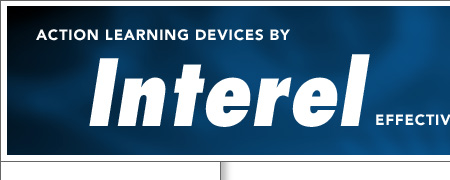

"Ode to the Maze" by David Gouthro
(Okay, so not actually an ode ...) It was the spring of 1987 when I was first exposed to the magic of the Electric Maze®. I was attending a workshop at the Pecos River Learning Center located outside Santa Fe, New Mexico in the Pecos wilderness. The moment I saw it and experienced it, I sensed incredible potential. My primary work is as a facilitator and trainer, working primarily with senior executives in private, public and not-for-profit corporations on four continents. What I loved about the Maze, was the rich metaphors it provided for meaningful debriefing and transfer of learning into a variety of corporate settings.
It was a number of years before I could get my hands on my own Maze, and wish I could say I waited patiently for that to happen! Once I did, I immediately started building it into leadership programs that my colleagues and I were developing for a major Canadian bank, and subsequently for a major international computer firm. I can't be sure about this, but I believe the introduction of the electronic Maze into experiential learning components of leadership development for IBM launched Boyd Watkins into a whole new scale of Maze production. The worldwide demand for them in their leadership programs was immense!
Remembering back to those days, I found the Maze to be an activity that led to its use over and over again, with changing metaphors and skills being built at the same time. For example, at the beginning of a weeklong program, we used the Maze to identify key leadership behaviors that we wanted participants to explore. Then, at the end of the program, we used the Maze again in a different configuration, with a totally different team dynamic to identify which behaviors leaders were able to incorporate, and where they slipped back into old habits. The learning of course, was that it doesn't matter how much you know, its what you remember to apply back at work that makes a difference. I believe the double use of the Maze substantially increased the retention of major learning points. In the intervening years until now, the Maze has been my go-to device for groups of eight participants to 40. At one time, I was using two Mazes with the same group simultaneously, allowing them to compare different approaches to the activity. I subsequently found that there is a tremendous amount of value from having a series of observers watch others engage in the Maze who can provide specific feedback to those participants, as well as providing an opportunity for an even richer debrief following the activity.
I remember one particular event with great glee! Participants had been directed to work together to figure out how to cross the Maze, and once the first person stepped foot on it, the remainder of the activity was to be completed in silence. If any participant spoke, penalty points would be subtracted from the group's final score. The group was achieving a high degree of success—they had found a path across the Maze and were starting to process their team through in rapid order. Once most of the group was through, I inconspicuously removed a programming plug from the Maze's control box. This changed the shape of the "safe path" and caused the previously successful group to falter, actually requiring them to regroup (in silence) to find a new path.
Participants became demoralized, disenchanted and disenfranchised, all at the same time. One particularly tall, well-muscled (as far as I could tell) individual came over to me, glaring. "You changed the pattern," he said. All I replied, quite loudly, was "PENALTY!" He was furious. Stepping closer, he peered down at me with a menacing look on his face and said "You changed the 'bleep' Maze." Again, I replied "PENALTY." By this time steam was coming out his ears, his face reddened substantially, and he was about to blow a gasket! Fortunately, as he was getting ready to pound me to a pulp, his team managed to find the new pattern and complete the activity.
In the debriefing, I naturally referred back to the steaming gentleman to extract the maximum learning. It was observed that he had taken some penalties by speaking to me when silence was a requirement. The learning was that those were wasted penalty points. I already knew the pattern had changed—after all, it was me who had changed it! It might have been worth taking the penalties if he had told his teammates about the change, because they were not aware the path had changed. So, instead of 'taking one for the team' and incurring a penalty so his team would be able to find the different path earlier (this saving time and metaphorical money), he chose to waste the points by threatening me! The Maze never fails to provide rich learning for one and all!
The Electric Maze has been such a hit that one of my clients bought their own to be used in their leadership assessment process. A Maze activity was used to identify and assess employees for high potential. The client's observation was that the way potential leaders interacted on the Maze was a good predictor of how they would act when facing real work dilemmas—it enabled them to provide additional training and coaching to prepare new leaders for the challenges ahead.
I started out with the original version of the Electronic Maze that was shipped in a large heavy-duty corrugated box. The box was very durable but a bit inconvenient to ship. Since then, Maze designs have continued to increase in their robustness, convenience, and portability. One of the current models is so incredibly portable that it's hard to imagine not being able to take it virtually anywhere in the world with ease.
Unfortunately, because the Maze is such a rich learning environment, it is easy to get lazy and continue to use the same pattern and metaphors time after time. This is not a problem with the Maze; it's a problem with lazy facilitators and consultants! The opportunities for tailoring the use of the Maze to a wide variety of environments and circumstances is virtually endless. Of all the many learning devices and simulations I use, if I had to give them up, the last one to go would be my Electric Maze.
I am grateful to have been introduced to the Maze so many years ago. It continues to offer a rich learning environment that provides value at many levels to my clients, and something that differentiates me from my competitors. 'Cause I have one Maze (two, actually!), and they don't!